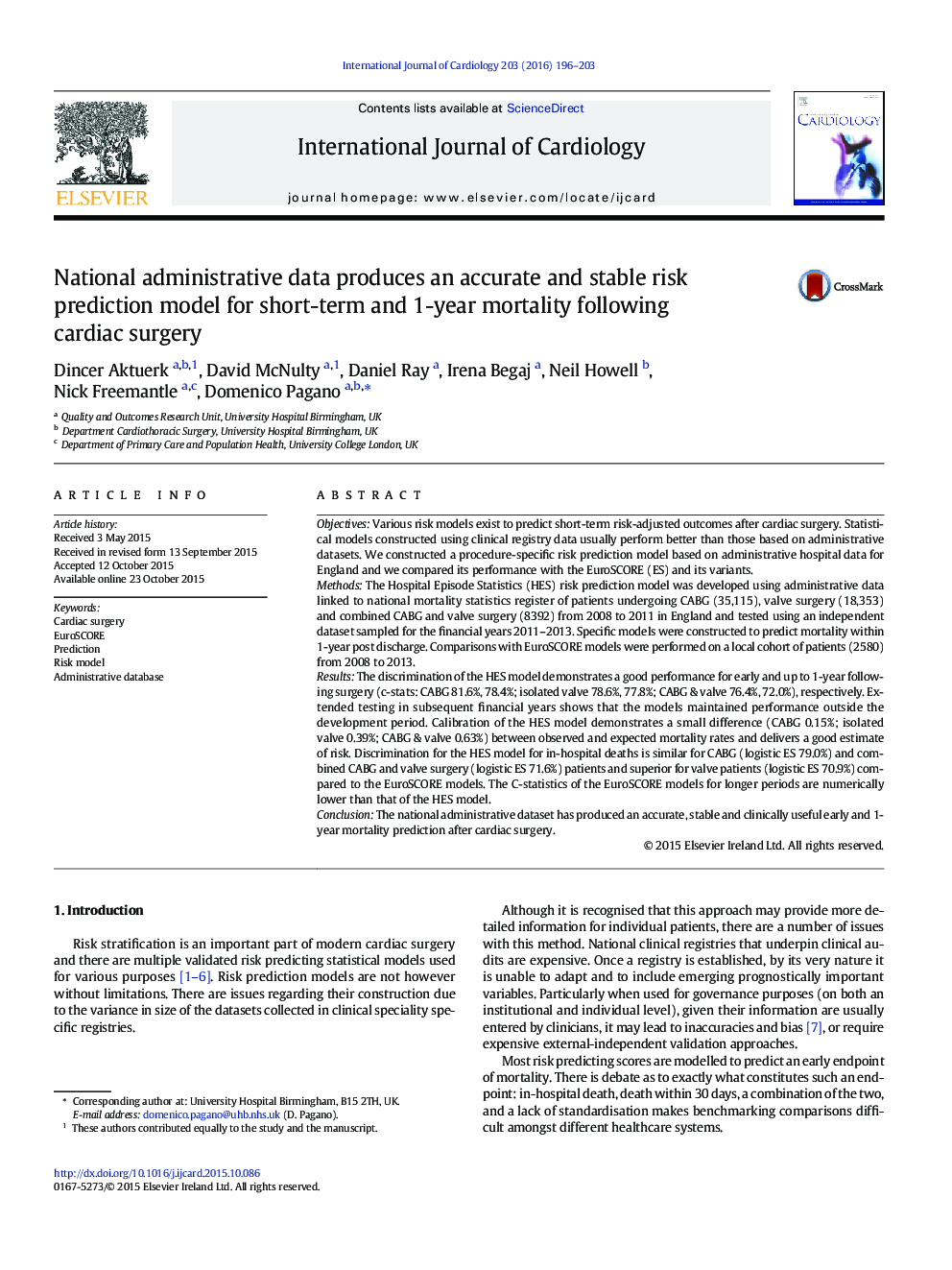| Article ID | Journal | Published Year | Pages | File Type |
|---|---|---|---|---|
| 5965574 | International Journal of Cardiology | 2016 | 8 Pages |
ObjectivesVarious risk models exist to predict short-term risk-adjusted outcomes after cardiac surgery. Statistical models constructed using clinical registry data usually perform better than those based on administrative datasets. We constructed a procedure-specific risk prediction model based on administrative hospital data for England and we compared its performance with the EuroSCORE (ES) and its variants.MethodsThe Hospital Episode Statistics (HES) risk prediction model was developed using administrative data linked to national mortality statistics register of patients undergoing CABG (35,115), valve surgery (18,353) and combined CABG and valve surgery (8392) from 2008 to 2011 in England and tested using an independent dataset sampled for the financial years 2011-2013. Specific models were constructed to predict mortality within 1-year post discharge. Comparisons with EuroSCORE models were performed on a local cohort of patients (2580) from 2008 to 2013.ResultsThe discrimination of the HES model demonstrates a good performance for early and up to 1-year following surgery (c-stats: CABG 81.6%, 78.4%; isolated valve 78.6%, 77.8%; CABG & valve 76.4%, 72.0%), respectively. Extended testing in subsequent financial years shows that the models maintained performance outside the development period. Calibration of the HES model demonstrates a small difference (CABG 0.15%; isolated valve 0.39%; CABG & valve 0.63%) between observed and expected mortality rates and delivers a good estimate of risk. Discrimination for the HES model for in-hospital deaths is similar for CABG (logistic ES 79.0%) and combined CABG and valve surgery (logistic ES 71.6%) patients and superior for valve patients (logistic ES 70.9%) compared to the EuroSCORE models. The C-statistics of the EuroSCORE models for longer periods are numerically lower than that of the HES model.ConclusionThe national administrative dataset has produced an accurate, stable and clinically useful early and 1-year mortality prediction after cardiac surgery.
